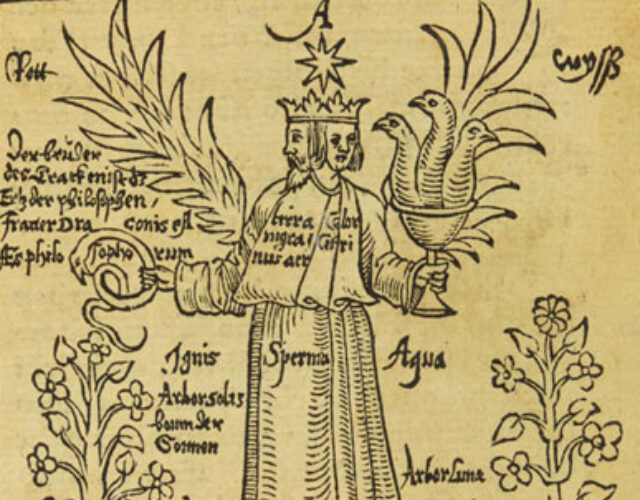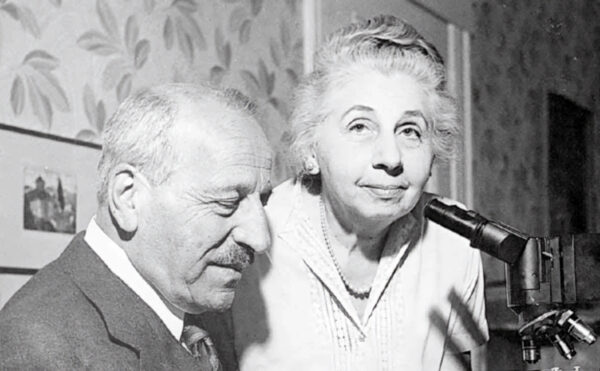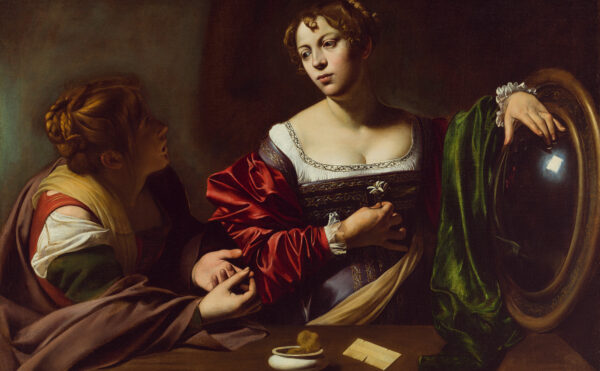One of the most modest of all the bindings in CHF’s rare-book collection is actually a great treasure: the first edition of Pandora, Das ist, Die Edleste Gab Gottes.
This unassuming book—bound in thin cardboard covered with rough blue paper trimmed flush to the text block—was among a collection of over two dozen alchemical books given to CHF by Alfred Bader in 2002. Many were early 18th-century German editions, a handful still clad in the characteristic vellum-and-gold binding of the court library of Christian Ernst, Graf zu Stolberg (1691–1771). In contrast, Pandora’s cardboard-and-blue-paper rebinding resembles nothing so much as a paperback published in cold war–era Eastern Europe. But opening the cover reveals a book of rarity and beauty.
Like many other alchemical publications, the authorship of this work is cloudy. It was edited by a physician, Hieronymus Reusner, and published in Basel in 1582. Reusner assigns the authorship to a Franciscan friar with the pseudonym Epimetheus, which accounts for the title. It translates to Pandora, That Is, the Noblest Gift of God, for it was Epimetheus, the brother of Prometheus, who accepted Pandora as a gift from Zeus.
The sequence of images in the latter part of the book—one of the first alchemical image series published—makes it unique. The woodcuts in Pandora are drawn from the earliest alchemical manuscript written in German, which was composed between 1414 and 1419, and almost certainly encode an actual sequence of chemical processes. The distilling apparatus the queen stands on links the image to laboratory practice. Particular motifs are repeated in these kinds of images. For instance, the sun usually represents gold and the moon silver. Flying and falling birds suggest sublimation and condensation.
Alchemists wanted to communicate their processes. Why else produce elaborate manuscripts or publish books? But they weren’t keen to communicate with just anyone. Alchemy, along with other crafts, had a long tradition of trade secrecy. As far back as the dawn of alchemy in Hellenistic Egypt, authors misdirected their readers with tricky synonyms and intentional double meanings, sometimes embedding solutions in elaborate allegories. Readers could figure out the meaning only if they knew the lingo and worked at it. After alchemy’s arrival in the West this encoding took the additional step of hiding meaning within an image. Pandora represents a very early and beautiful example of this development.




